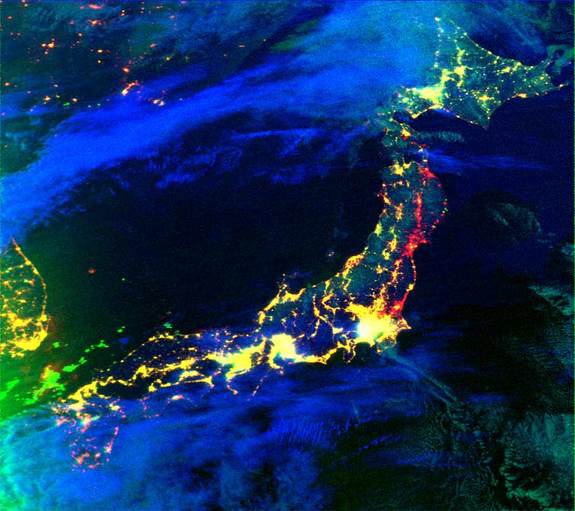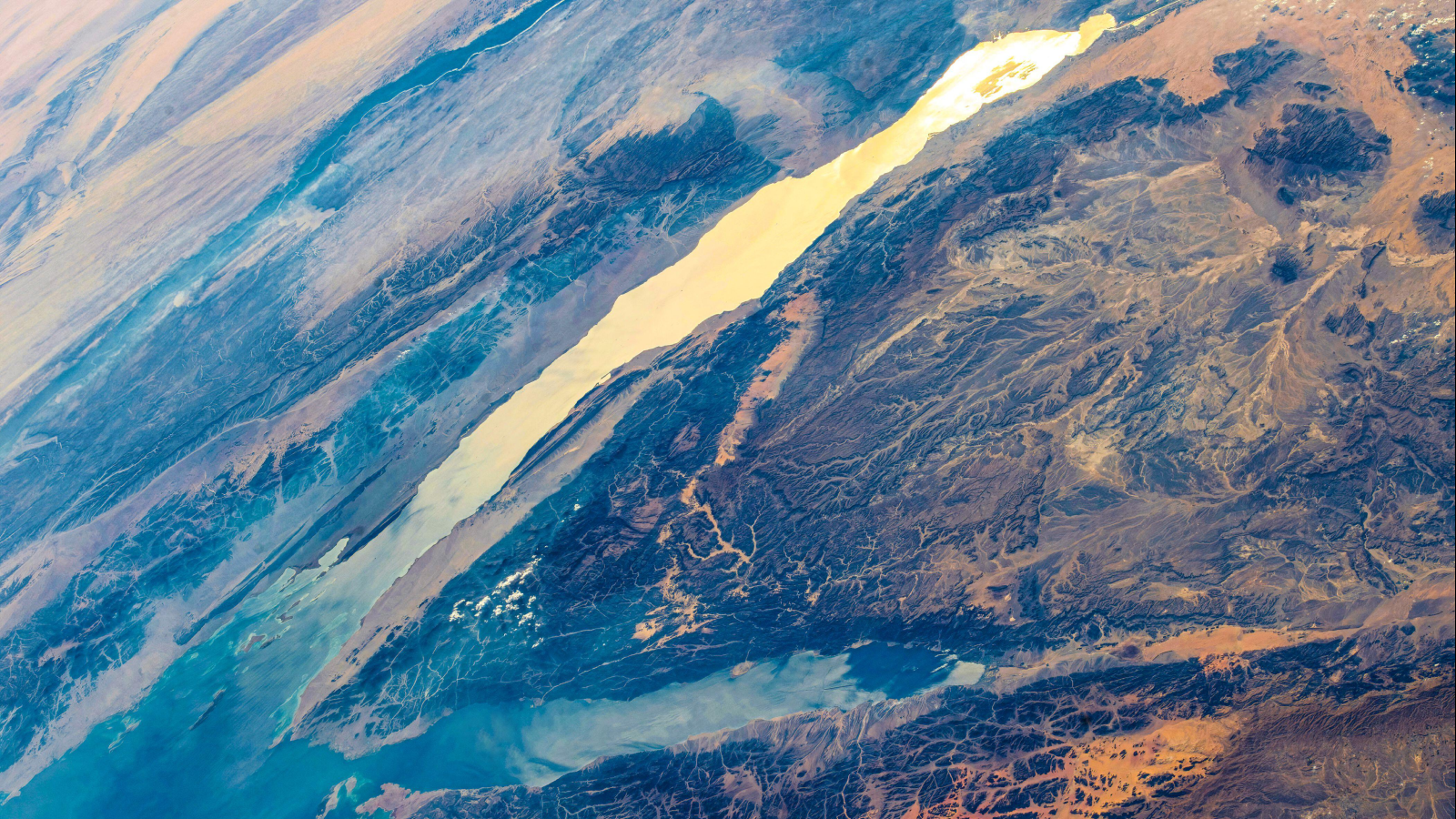FAQ: The Science of Japan's Natural Disaster & Nuclear Crisis

Japan is still reeling from the 9.0-magnitude earthquake and tsunami that struck on March 11, with thousands missing and dead, and now a nuclear crisis continues as officials and workers struggle to cool the damaged reactors.
Here's what is known about the situation. LiveScience will continue to update this FAQ.
INFOGRAPHICS:
- Inside Japan's Nuclear Reactors
- Fuel at Fukushima Daiichi Reactors
- Japan's Quake-Damaged Nuclear Power Plants
- Japan Earthquake & Tsunami a Deadly Combination
- Map Shows Nuclear Reactors in Quake Zones
- How Radiation Affects the Human Body
What caused the earthquake and tsunami?
Japan sits along the Pacific Ring of Fire, a geologically active zone where the tectonic plates in the Earth's crust rub against each other. In the Pacific Ocean off Japan's east coast, the Pacific Plate is being pushed down into the Earth's interior, a process called subduction. The Pacific Plate moves 3.5 inches (8.9 centimeters) a year, but that movement isn't continuous. Instead, pressure builds as the tectonic plates stick against each other. When the plates finally give, the amount of energy released can be tremendous.
That's what happened with the Japan quake, which originated 231 miles (373 kilometers) northeast of Tokyo and 80 miles (130 km) east of Sendai, Honshu. The sudden movement shifted the seafloor, creating the tsunami. Offshore, a tsunami is barely a ripple, albeit one that is traveling hundreds of miles per hour. As the tsunami hits the coast, it slows and grows in height, unleashing a wave that usually looks more like a massive flood.
[In Pictures: Japan Earthquake & Tsunami]
Get the world’s most fascinating discoveries delivered straight to your inbox.
How big was the tsunami?
The highest of the tsunami waves to hit Japan are believed to have reached 30 feet (9.1 meters). Within minutes after the earthquake, the waves hit Japan. The first survivors to report said they'd seen 23-foot (7-meter) tall waves, according to the National Oceanic and Atmospheric Administration (NOAA). The highest official record from a surviving wave gauge was a wave height of 6 feet (1.83 meters) at Hanasaki, in the Hokkaido prefecture at the northeastern tip of Japan. That number is the height of the peak above normal sea level, meaning the wave's peak-to-trough measurement was likely at least 12 feet (3.6 m).
The tsunami took nine and a half hours to cross the Pacific and arrive at the West Coast of the United States, according to where it caused some rough surf but little damage. Twenty-two hours after the initial quake, the remnants of the tsunami had spread throughout the entire Pacific Ocean.
[Video of Loyal Dog in Japan Reveals Canines' Social Roots]
How did the earthquake and tsunami change the globe?
The earthquake and tsunami took a massive humanitarian toll. Police estimates suggest that more than 18,400 people died, and nearly half a million are living in shelters.
The quake was large enough to shift Japan's main island about 8 feet (2.4 m). It shifted the mass of the Earth toward the equator by about six and a half inches (17 cm), enough to speed up the planet's rotation and shorten the day by 1.8 millionths of a second.
Is Japan still experiencing aftershocks?
Yes, and they're likely to continue for months, according to Henry Pollack, an emeritus professor of geophysics at the University of Michigan. Aftershocks are common after large quakes, Pollack said. Japan experienced nearly 100 earthquakes of magnitude 5 or greater in the day after the quake. At least 20 of those were magnitude 6 or greater, a level at which buildings, especially poorly built structures, can sustain damage, according to the United States Geological Survey (USGS).
On March 21 alone, there were 13 quakes with a magnitude greater than 2.5 centered off the east coast of Honshu, Japan. The quakes had magnitudes between 4.6 and 5.3.
How did the earthquake and tsunami damage nuclear reactors in the area?
Eleven reactors nearest the quake's epicenter automatically shut down upon sensing vibrations in the early hours of March 11. "Reactors shut themselves down automatically when something called 'ground acceleration' is registered at a certain point, which is usually quite small. It will instantly drop control rods into the [nuclear] core," Professor Tim Albram, a nuclear fuel engineer at the University of Manchester in the U.K., told the media.
Even though that stopped the process whereby the rods send neutrons into the reactor core where fission proceeds to produce nuclear energy, heat from nuclear decay continues to flow off the rods. And since there wasn't electrical power to pump water through the cooling system and dissipate the extra heat, workers have struggled to keep the rods submerged in water to prevent the reactors from overheating.
[Timeline of Events at Japan's Fukushima Nuclear Reactors]
Are the nuclear reactors still in danger of a complete meltdown?
No – the danger of a complete meltdown has passed. A partial meltdown of at least two reactors occurred several days ago, but seawater injection into the reactor vessels in recent days has flooded the nuclear fuel rods with water and stabilized their temperatures. According to a U.S. Nuclear Regulatory Commission (NRC) official, the situation at the Fukushima plant is "on the verge of stabilizing."
How much radiation is currently leaking from the reactors?
Beta and gamma radiation both appear to be radiating from radioactive materials that have leaked from the plant. According to the IAEA, the dose-rates measured at distances from 56 to 200 km from the plant range from 2-160 microsieverts per hour, which compares to a typical natural background level of around 0.1 microsieverts per hour. High levels of beta-gamma contamination have been measured between 16-58 km from the plant. As of March 20, no significant alpha radiation had been detected in measurements taken within the evacuation zone (20 km).
[Heroic Fukushima Workers Face Staggering Risks]
How are people being exposed to radiation (food air...)?
People are being exposed to radiation by way of radioactive materials that escaped from the reactor vessels during pressure-relieving venting procedures, and from materials that entered the atmosphere during fires in spent fuel pools at the plant. These substances, such as cesium-137 and iodine-131, float in the air or settle on the ground and enter the water and food chain. They continue radiating for days, months, or years, depending on how quickly each substance decays.

